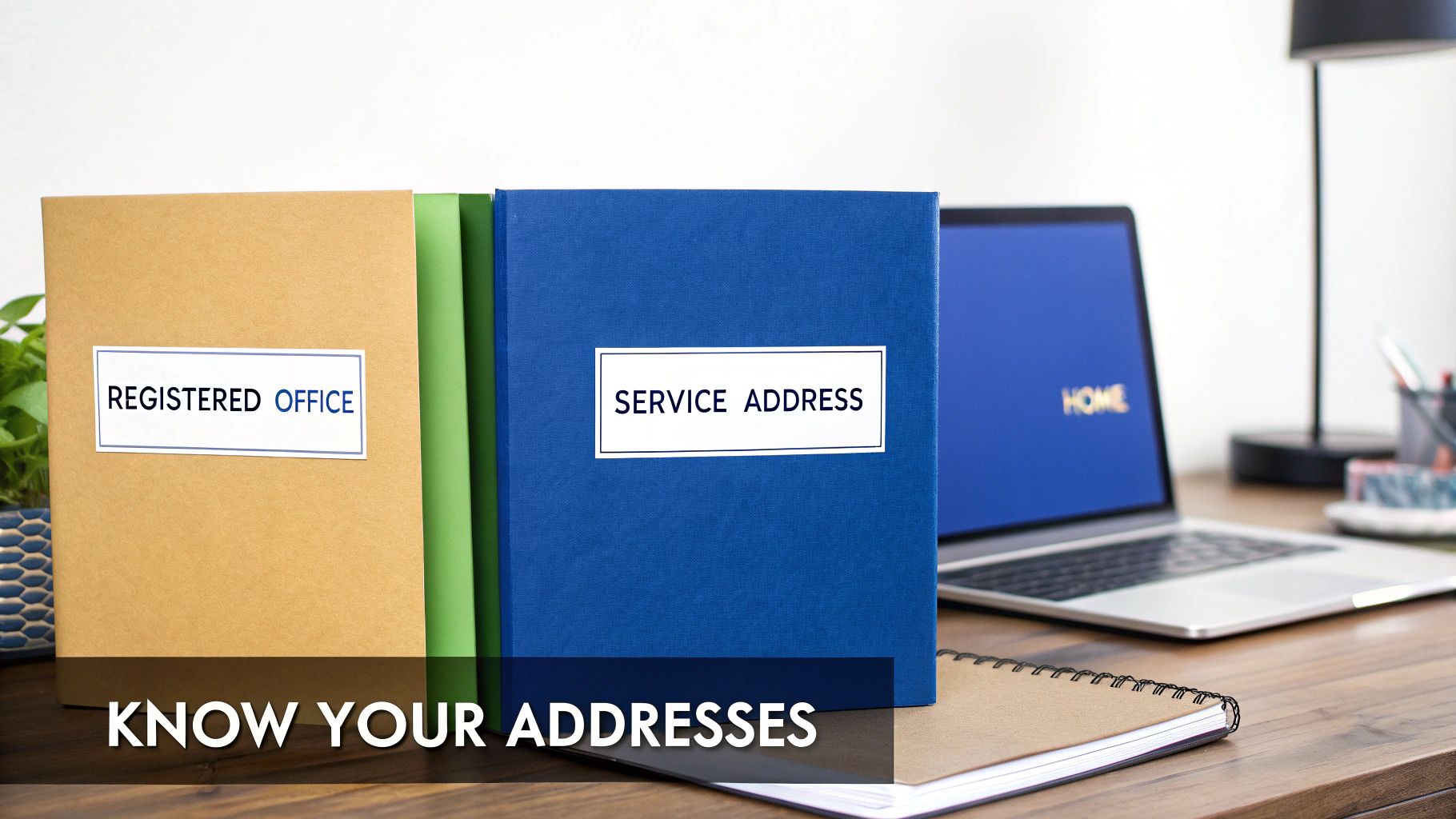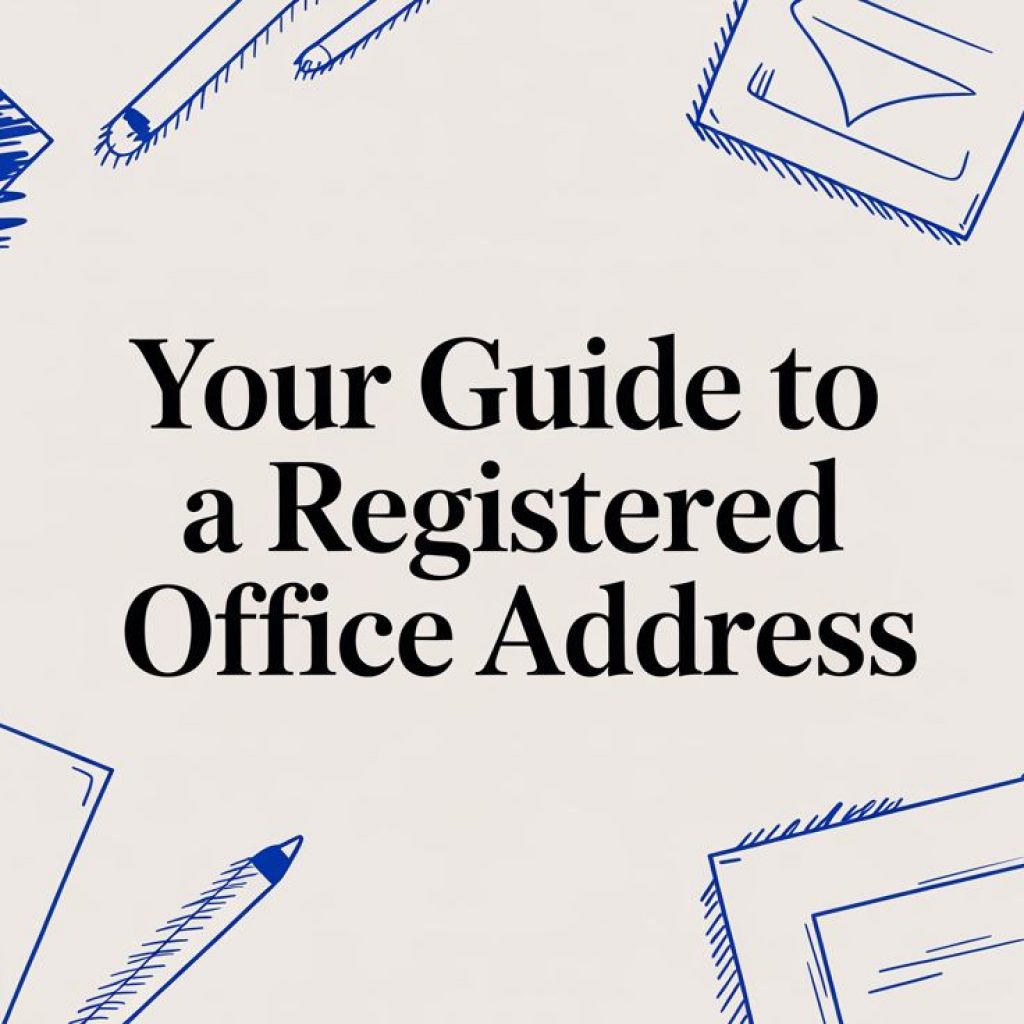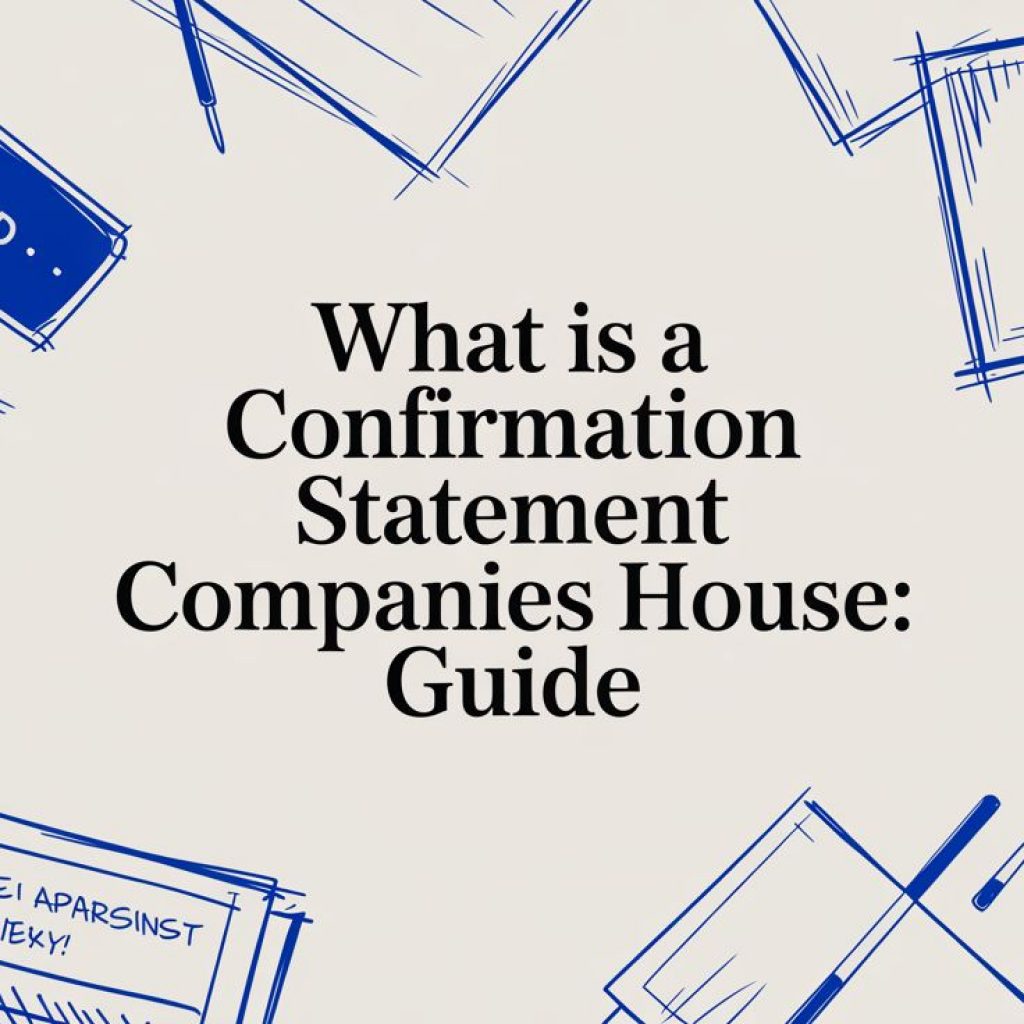Changing Address at Companies House
Changing Address at Companies House – Thinking of changing your company’s address at Companies House? It’s more than just a quick admin task. You’ll need to formally update your company’s Registered Office Address, which you can do online or by post with Form AD01. This is a legal must-do. HMRC and Companies House use this address for all official mail, and getting it wrong can lead to fines or worse. The online route is definitely the quickest—you’ll usually see the public register updated within 48 hours.
Getting Your Company Addresses Straight
Before you jump into the process, it’s crucial to know exactly which address you’re changing and why. A limited company has a few different addresses on record, and each one has a specific legal job. It’s a common trip-up for new directors, but mixing them up can cause compliance headaches or even expose your personal details to the public.
So, let’s break down the three main addresses you need to be aware of:
- Registered Office Address: This is the official, legal home of your company.
- Director’s Service Address: This is the public correspondence address for a director.
- Director’s Residential Address: This is a director’s private home address, which is kept off the public record.
Acorn Business Solution – The professional registered office service from Acorn allows you to use our address as both your Registered Office Address and includes the directors service address at no extra charge.

To make it even clearer, here’s a quick reference table that breaks down the key differences.
Key Company Addresses and Their Purpose
| Address Type | Primary Purpose | Public Record Status | Example Usage |
|---|---|---|---|
| Registered Office Address | The official, legal address for statutory mail from Companies House and HMRC. | Yes, fully public on the Companies House register. | Receiving official government notices, legal documents, and statutory demands. |
| Director’s Service Address | The official correspondence address for a specific company director. | Yes, fully public on the Companies House register. | Receiving personal statutory mail addressed to the director from Companies House. |
| Trading Address | The physical location where your day-to-day business operations take place. | No, not required on the public record (but often used publicly). | Putting on your website, business cards, and invoices for customers and suppliers. |
Understanding these distinctions is the first step to making sure you’re filing the right information and protecting your privacy.
The Role of a Registered Office Address
Think of your registered office as your company’s official front door for all legal mail. It has to be a real, physical address in the UK—not just a PO Box—where someone can physically receive and sign for important documents. It also needs to be in the same part of the UK where you incorporated. So, a company registered in England and Wales can’t have its registered office in Scotland. Simple as that.
This address is completely public, meaning anyone can find it on the Companies House register. This is precisely why so many business owners avoid using their home address. While it might seem easy at first, it puts your private address out there for everyone to see and can give your business a less professional image. For a deeper dive, our guide on what is a registered office has you covered.
Your registered office isn’t just a mailbox; it’s a legal anchor for your company. It establishes your official presence and ensures you’re reachable for any formal correspondence. Getting this right is a cornerstone of good company management.
It’s also worth noting that recent reforms have tightened the rules. Companies House now requires an ‘appropriate address’—a physical place where documents can be delivered and acknowledged. The old trick of using a PO Box is no longer allowed. This change is all about increasing transparency and making sure companies can be held accountable. Fail to provide a valid address, and you risk having your company struck off the register.
Service Address vs Residential Address
While the registered office is for the company itself, the service and residential addresses are all about the directors.
The Director’s Service Address is also on the public record. This is where a director will get their own statutory mail. It can be the same as the company’s registered office, or it could be a completely different location.
For example, imagine a director named Sarah runs her online store from a small commercial unit. She can use that unit’s address as both the company’s registered office and her own service address. This creates a neat separation between her business life and her home life.
Her private residential address must also be provided to Companies House, but it’s kept confidential and hidden from public view.
This separation is so important for privacy. If Sarah had used her home address as her service address, it would be freely available online. That could lead to anything from a flood of junk mail to unwanted visitors turning up on her doorstep.
How to Update Your Registered Office Address
Changing your company’s registered office address is one of those essential bits of admin that you absolutely have to get right. Thankfully, it doesn’t have to be a headache. The quickest and easiest route is to do it online, which usually gets the public register updated within 24-48 hours.
Let’s walk through it with a real-world example. Imagine an e-commerce startup, “Brighton Candle Co.,” which has been running from its founder’s kitchen table. Business is booming, and they’ve just leased their first proper workshop. Now, they need to make it official at Companies House.

The Online Filing Process
Honestly, filing online is the way to go. It’s free, secure, and far faster than messing about with paper forms.
Before you start, there’s one piece of information you can’t do without: your company authentication code. Think of this 6-character alphanumeric code as your company’s electronic signature. It was posted to your registered office when you first incorporated.
Can’t find it? You can request a new one from the Companies House website, but—and this is a big but—they will post it to the current address on file. If you no longer have access to that address, you need to sort this out well in advance. Don’t leave it until moving day.
Once you’ve got your code, the rest is plain sailing:
- Head over to the ‘File for a company‘ service on GOV.UK and log in.
- Pop in your company name or number to find your business.
- From the filing dashboard, select the ‘Change registered office address’ option.
- Carefully enter your new address. The system has a handy postcode lookup to minimise typos, but you should still check every line. For Brighton Candle Co., this is where they’d enter their new workshop address.
- Give everything one last look-over. If it’s all correct, enter your authentication code to authorise the change and hit submit.
That’s it! An email confirmation should land in your inbox almost instantly, with the public record typically updated within two working days.
Filing by Post Using Form AD01
If you really want to go the old-school route, you can still file by post using Form AD01. You can download this paper form from the GOV.UK website.
You’ll need to fill out your company name, number, and the new registered office address. Then, a director, secretary, or another authorised person must sign it.
Be warned, though, this method has some serious downsides. Postal applications can take 7-10 working days (or longer) to be processed, which is a significant delay. There’s also a much higher chance of it being rejected for simple mistakes, like a missing signature or an incomplete address. For a business like Brighton Candle Co., which needs its details updated promptly for suppliers and banks, the online method is the only sensible choice.
Pro Tip: Time your address change carefully. It’s always a good idea to file the update well before your confirmation statement is due. That way, you can just confirm the new, correct address on the statement instead of having to do two separate filings.
What to Do After You’ve Filed
Whether you filed online or by post, your job isn’t quite finished. You are legally required to display the new address at the location itself. More importantly, you must update it across all your business stationery, invoices, and your website. Keeping everything consistent is crucial for compliance and looking professional.
Updating a Director or PSC Service Address
While your registered office is your company’s official legal home, the service address is the public point of contact for its directors and Persons with Significant Control (PSCs). It’s a crucial piece of the puzzle for maintaining privacy and projecting a professional image, and changing it is a separate job from updating the registered office.
Unlike the registered office change, which is one update for the whole company, you have to update the service address for each director or PSC individually. Getting this right is a vital part of changing address at Companies House because it ensures all statutory mail meant for a director actually reaches them.
Picture this: a director starts out using their home address for correspondence but later decides to switch to a professional service address. It’s a smart move that stops official documents—and plenty of junk mail—from piling up on their doormat, boosting their security and helping separate work from home life.
Let’s walk through how it’s done.
The Online Method for Directors and PSCs
As with most Companies House tasks these days, doing it online is by far the quickest and easiest route. The process feels similar to changing the registered office, but you’ll need to go into the specific officer’s details within the Companies House portal.
You’ll need your company authentication code to get started. Once you’re logged in, you just need to find the option to update officer details, select the right director or PSC, and edit their service address.
When you do this online, you’re essentially filling out the digital version of these forms:
- Form CH01: Used to change the details of a director.
- Form PSC04: Used to change the details of a Person with Significant Control.
The online system walks you through everything step-by-step, making it pretty hard to go wrong. Best of all, this method usually gets the public register updated within 48 hours, making it the clear winner for anyone who needs the change made quickly.
Using Paper Forms for a Service Address Change
If for some reason you have to file by post, you’ll need to download, print, and fill out the correct form—either a CH01 for a director or a PSC04 for a PSC. Don’t forget, you need a separate form for every single person whose address you’re changing.
Honestly, this way is much, much slower. You should brace yourself for a processing time of up to 10 working days. Worse, any tiny mistake on the form, like a missed signature or a typo in the company number, will get it rejected, sending you right back to square one.
A director’s service address is a powerful tool for privacy. By using an address separate from your home, you create a professional buffer, keeping your personal life confidential while still meeting your legal obligations. This is a simple but effective strategy for modern company directors.
Why Separating Addresses Is a Smart Move
The perks of using a dedicated service address are about more than just where your mail goes. For many directors, it’s a non-negotiable part of managing their public profile and personal security.
Here are the real-world advantages:
- Enhanced Privacy: Your home address is kept off the public register, protecting you and your family from unsolicited mail, unwanted visitors, and potential security risks.
- Professional Image: A consistent, professional business address for your company and its directors builds instant credibility with clients, suppliers, and investors.
- Improved Organisation: All official mail for the company and its officers lands in one central, managed place, so there’s less risk of important documents getting lost in the shuffle.
Making this update is a straightforward part of changing address at Companies House. If you want to dive deeper into this, have a look at our complete guide to a director service address for more insights. It’s a proactive step that safeguards your personal information while keeping your company compliant.
How to Protect Your Home Address from Public View
Are you worried about your personal address being plastered all over the public register? It’s a completely valid concern, and one we hear from company directors more and more. Having your home details out in the open can lead to everything from annoying junk mail to serious privacy invasions and security risks.
The good news is, the law has caught up. If you’ve previously used your home as your company’s registered office, there’s now a clear-cut way to get it scrubbed from historical records.

Let’s walk through the exact process you can follow to protect your home address and keep your personal information exactly that—personal.
The Power of Address Suppression
Thanks to new rules under the Economic Crime and Corporate Transparency Act 2023, directors finally have more control over their historical data. Companies House now allows directors to formally request the removal of their home address from past filings where it was used as the company’s registered office. It’s a huge step forward for director privacy.
But there’s a catch. Your home address can’t still be your company’s current registered office. Before you can even think about removing old records, you must first change your registered address to a new, non-residential location. For many, a professional service like a virtual address for business in the UK is the perfect solution.
Applying with Form SR01: A Practical Guide
The official way to get this done is by submitting Form SR01. You can file it online or by post, but as with most things Companies House, the online route is miles quicker and easier.
Here’s a breakdown of what’s involved:
- Check you’re eligible. The main thing is that your home address was previously the registered office, but it isn’t anymore. Simple as that.
- Get your info together. You’ll need your company name, number, and the full residential address you want removed.
- Submit the application. You have to complete and file a separate Form SR01 for each company director looking to have their address suppressed.
- Pay the fee. Each application comes with a £30 statutory fee. It’s non-refundable, so double-check everything is spot-on before you submit.
Applying for address suppression isn’t just admin; it’s a proactive security move. By wiping your home address from historical records, you’re slamming a publicly accessible door shut on your private life.
What Does Suppression Actually Do?
It’s important to know what this process achieves and what it doesn’t. When your application is successful, Companies House will effectively hide your home address on the historical documents you’ve specified.
This means anyone searching the public register in the future simply won’t see that address on those old filings. It redacts that specific bit of information, protecting it from prying eyes.
Let’s look at a real-world scenario. A freelance consultant, Alex, started his limited company from his flat five years ago. He used his home address as the registered office for the first two years before moving to a shared workspace. Even though his current registered office is a proper commercial building, his old flat address is still visible on his original incorporation documents and early confirmation statements for anyone to find.
By filing Form SR01 and paying the £30 fee, Alex can get his flat’s address removed from those historical records. This single action shrinks his digital footprint and boosts his personal security, stopping future clients or suppliers from easily finding where he lives.
Common Filing Mistakes You Need to Avoid
Successfully changing your address at Companies House should be straightforward, but simple mistakes can lead to frustrating rejections and delays. These aren’t usually complex legal blunders; they’re often small oversights made in a rush.
Knowing what these common pitfalls are ahead of time is the best way to ensure your filing sails through without a hitch. Let’s walk through the most frequent mistakes we see and how you can sidestep them.
Forgetting Your Authentication Code
One of the most common hurdles is simply not having your company’s authentication code ready. This six-character alphanumeric code is your electronic signature, and you absolutely cannot file online without it.
Here’s a classic scenario: a director tries to file an urgent address change but can’t find the code. They request a new one, only to realise it’s being posted to the old address they no longer have access to. It’s a simple mistake that can cause a major delay.
Actionable Insight: Locate your authentication code before you even think about making changes. If you need to request a new one from the Companies House website, do it well in advance of your move. Make sure it’s sent to an address you can still access.
Using an Invalid Address Type
Companies House has strict rules about what constitutes a valid registered office. The days of getting away with a PO Box are long gone, yet some people still try to file one.
Your registered office must be a real, physical address where official documents can be delivered and acknowledged by a person. It can’t just be a mail-drop.
Key Takeaway: An ‘appropriate address’ is non-negotiable. Using a PO Box number as your registered office address is a guaranteed way to get your application rejected. This isn’t just red tape; it’s a core requirement for corporate transparency in the UK.
Ignoring Post-Filing Responsibilities
Many business owners breathe a sigh of relief once Companies House confirms the change and assume the job is done. This is a critical error. Think of Companies House as just one piece of a much larger puzzle.
It’s a mistake to update Companies House but forget to inform HMRC, your business bank, payment processors, and key suppliers. This can lead to missed tax reminders, failed security checks from your bank, or invoices piling up at the wrong location.
Actionable Insight: The moment you submit your change, create a “post-filing checklist”. Your first two calls should be to HMRC (for Corporation Tax, VAT, and PAYE) and your bank. After that, work through the rest: update your website footer, invoice templates, email signatures, and any other business stationery.
Filing the Wrong Form or Information
It’s surprisingly easy to mix up the forms or select the wrong option online, especially when you’re juggling different address types. A registered office change (Form AD01) is completely different from a director’s service address change (Form CH01).
Imagine a director wants to stop receiving official mail at their home and updates their service address online. If they accidentally select the ‘registered office’ option, they’ve just moved the official address for the entire company, creating a serious compliance issue.
Another common slip-up is a simple typo in the company number or the new postcode. While the online portal has a helpful postcode lookup, it’s still possible to select the wrong street number in a hurry. Always double-check every single character before you hit submit. A tiny error can lead to an outright rejection, forcing you to start the whole process all over again.
Your Post-Filing Checklist for a Smooth Transition

Successfully changing address at Companies House feels like a huge relief, but don’t close the book on this task just yet. That confirmation email from Companies House is the starting pistol, not the finish line.
If you don’t update your new address across the board, it can cause some serious operational headaches. Think missed bank security alerts, important tax notices going astray, or confused customers. You’ve told the government where your company officially lives, but now you need to let everyone else who matters know.
A smooth transition needs a methodical approach. This final checklist covers all the essential updates you need to make to keep your business protected and compliant.
Priority Financial and Legal Notifications
First things first, get on the phone or email the institutions that handle your money and tax. These are non-negotiable and need to be sorted the moment you get that confirmation from Companies House.
- HM Revenue & Customs (HMRC): This is a big one. Companies House does not automatically tell HMRC about your change. You must update your address separately for Corporation Tax, VAT, and PAYE. It’s vital for receiving important correspondence and filing reminders.
- Your Business Bank: Let your bank know straight away. An old address can trigger security flags, delay new cards or PINs, and cause real problems with account verification.
- Payment Processors: Using services like Stripe, PayPal, or GoCardless? Get into their dashboards and update your business address. Mismatched details can easily lead to payment holds or frustrating compliance reviews.
- Insurers: Drop your business insurance providers a line to let them know about the new address. This ensures your public liability, professional indemnity, and other policies remain valid.
Updating Your Business Assets and Stationery
Next, turn your attention to your company’s public-facing materials. Consistency is absolutely key for maintaining a professional image and meeting your legal display requirements. An old address on your website or invoices just looks sloppy and can really confuse customers.
Neglecting to update your business stationery and digital footprint after an address change is like leaving your old front door unlocked. It creates inconsistencies that can erode trust with customers and cause practical problems with deliveries and payments.
This is more than just a cosmetic fix; it’s a legal requirement. The Companies Act actually mandates that your registered office address must be displayed on all business letters, order forms, and websites.
Your Essential Update List
Work through this list systematically to make sure you don’t miss anything:
- Website Footer and Contact Page: This is one of the first places potential clients will look. Update it immediately.
- Invoice and Letterhead Templates: Every new invoice, quote, or official letter must carry the new address.
- Email Signatures: A quick and easy fix that makes sure every email going out has the correct information.
- Online Directories: Get your listings on Google Business Profile, Yell, and any industry-specific directories updated.
- Suppliers and Customers: Notify key suppliers to prevent delivery errors and inform regular clients who might have your old details saved.
- Contracts and Legal Documents: Make sure any new agreements or contracts you sign reflect the current registered address.
By methodically ticking off these points, you’ll guarantee a smooth transition and avoid the operational headaches that come from having outdated information floating around.
Your Questions Answered
Navigating the rules around company addresses can throw up a lot of questions. Let’s tackle some of the most common queries we get from business owners when they’re updating an address at Companies House.
How Long Does an Address Change Take?
The speed of the update depends entirely on how you file it.
If you submit your changes through the Companies House online portal, it’s incredibly quick. The update is usually processed and visible on the public register within 24-48 hours. It’s the fastest and most efficient way to get it done.
However, if you opt for the postal route using paper forms like the AD01 or CH01, you’ll need a bit more patience. These applications can take between 7 to 10 working days to be processed, and that’s assuming there are no mistakes on the form that could cause further delays.
Can I Use a Virtual Office Address?
Absolutely. Using a virtual office address for your registered office is a perfectly acceptable and very popular choice for modern businesses. The only condition is that it must meet the legal requirement of being an ‘appropriate address’.
What does this mean in practice? It has to be a genuine physical location where official mail can be delivered, received, and acknowledged on your company’s behalf. A simple PO Box number won’t cut it and will be rejected. Compliant virtual office services are specifically designed to meet these criteria.
What Happens If I Forget to Update My Address?
Forgetting or delaying an address change is a serious compliance issue, and it’s something you really want to avoid. Failing to inform Companies House of a new registered office address is a legal offence, which can lead to fines for both the company and its directors.
Worse than the fine, though, are the practical consequences. If official legal notices from HMRC or Companies House are sent to an old address and you miss them, it could eventually lead to your company being forcibly struck off the register. Keeping your details up to date is crucial for your company’s good legal standing.
Simplify your compliance and protect your privacy with a dedicated address from Acorn Business Solutions. Our Registered Office and Director’s Service Address solutions ensure you meet all legal requirements while keeping your home address off the public record. Find out more at acornbusinesssolutions.com.






